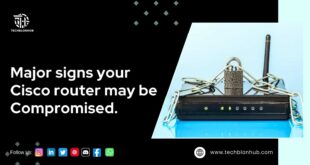You’ve been there-sitting in a café or an airport, grateful for free Wi-Fi that keeps you connected. But as convenient as it seems, it can open the door to serious security risks. So, how can you enjoy the perks of public Wi-Fi without putting your personal data in danger? Let’s dig deeper.
Why We Rely on Public Wi-Fi?
Public Wi-Fi networks are one of the conveniences we all appreciate today. They:
Save Mobile Data: Nobody likes running out of data in the middle of the day.
Quick Access: A simple connection lets you browse, stream, or work instantly.
Productivity Anywhere: Whether you check your emails or join a meeting, it keeps you connected.
But this ease can come at a cost if you’re not careful.
The Risks of Public Wi-Fi
It’s accessible to everyone and free, yet it has very few security features about your data. Some of the threats include the following:
Hackers can easily capture information that you are sending over an unsecured network including passwords and credit card details.
Sometimes, hackers make networks similar to those real ones hence tricking you to connect to them.
Unencrypted Connections: Most public Wi-Fi doesn’t encrypt data, so your activity is up for grabs.
You might unwittingly hand over your personal information to the wrong person.
How to Identify Unsafe Networks
Most public Wi-Fi isn’t created equal. Be on guard for:
No Password Required: If a network doesn’t require a password, avoid it.
Generic Names: “Free Wi-Fi,” “Guest Network,” is often a sign of risk.
Be cautious of networks that make a demand for the purpose behind taking your private information.
Do not join any network in which you are not quite sure.
How to Keep Yourself Safe on Public Wi-Fi
You don’t need to avoid it completely. Having a little bit of cautiousness, you can link in and benefit with full security:
Use a VPN: With a VPN, it’s almost impossible to crack your encryption connection to a hacker.
Disable Auto connects: Never connect to networks without permission
Use only secure sites: Always look for “HTTPS” and a padlock icon in the browser before filling sensitive information
Avoid risky activities: You should not make online banking or shopping by using it.
Activate Two-Factor Authentication: Add another layer of security to your accounts
These minor practices will keep most risks at bay but not cut you off.
Conclusion
It might be pretty convenient, but all such conveniences are too laced with risks concerning exposure to data. Just to stay safe, some tiny measures will benefit you without allowing exposure to your privacy.
Consider much lesser convenience the next time you connect.
 TechBlonhub A new digital technology era.
TechBlonhub A new digital technology era.




2 comments
Pingback: Prioritizing Your Intuit Software To Get The Most Out Of Your Business - TechBlonhub
Pingback: XFP Module | High-Performance 10G Transceivers for Seamless